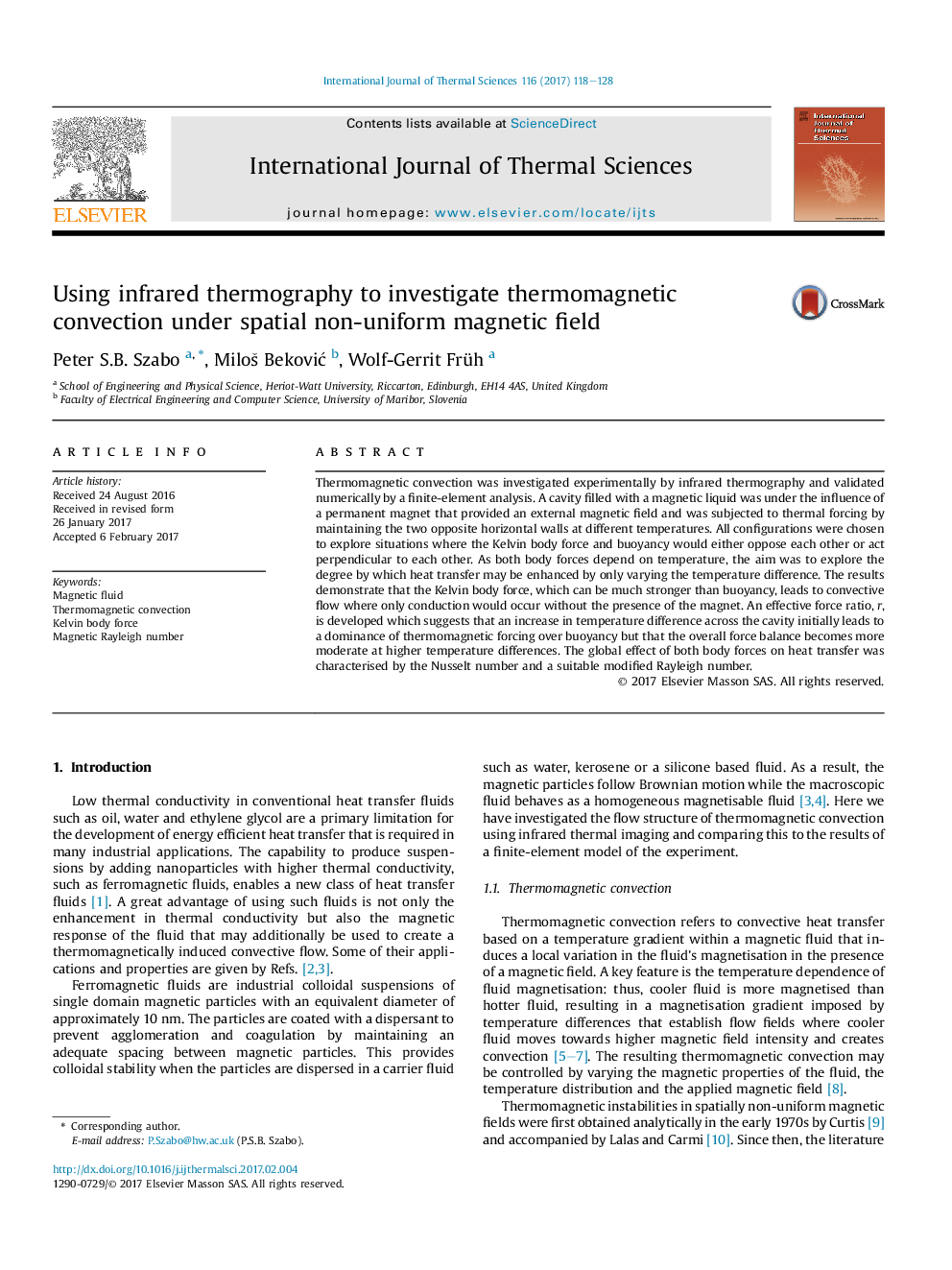| Article ID | Journal | Published Year | Pages | File Type |
|---|---|---|---|---|
| 4995332 | International Journal of Thermal Sciences | 2017 | 11 Pages |
Abstract
Thermomagnetic convection was investigated experimentally by infrared thermography and validated numerically by a finite-element analysis. A cavity filled with a magnetic liquid was under the influence of a permanent magnet that provided an external magnetic field and was subjected to thermal forcing by maintaining the two opposite horizontal walls at different temperatures. All configurations were chosen to explore situations where the Kelvin body force and buoyancy would either oppose each other or act perpendicular to each other. As both body forces depend on temperature, the aim was to explore the degree by which heat transfer may be enhanced by only varying the temperature difference. The results demonstrate that the Kelvin body force, which can be much stronger than buoyancy, leads to convective flow where only conduction would occur without the presence of the magnet. An effective force ratio, r, is developed which suggests that an increase in temperature difference across the cavity initially leads to a dominance of thermomagnetic forcing over buoyancy but that the overall force balance becomes more moderate at higher temperature differences. The global effect of both body forces on heat transfer was characterised by the Nusselt number and a suitable modified Rayleigh number.
Related Topics
Physical Sciences and Engineering
Chemical Engineering
Fluid Flow and Transfer Processes
Authors
Peter S.B. Szabo, MiloÅ¡ BekoviÄ, Wolf-Gerrit Früh,
